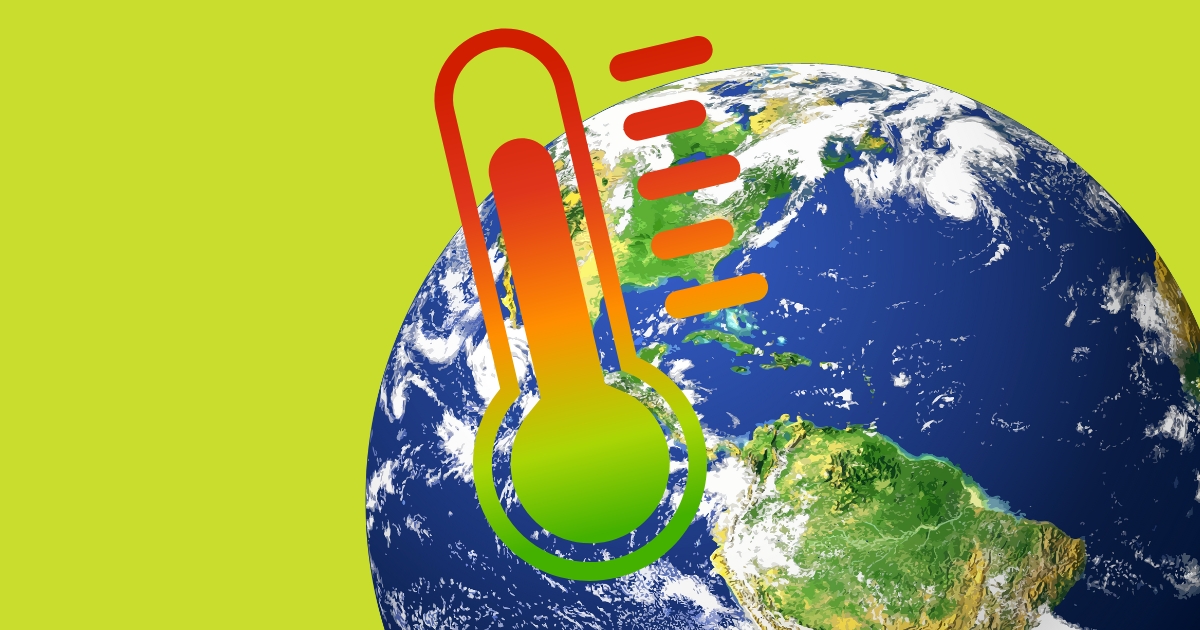How Are Record Breaking Global Temperatures Measured?
Date: 29/07/24

Recently, we’ve all seen headlines about record breaking global temperatures. In July, the global average surface air temperature record was broken twice in one week. The previous record was set just last year.
But what exactly is the global average surface air temperature, how is it measured, why is it important and what can you do about it?
What is the global average surface air temperature?
The average global surface air temperature is the mean of tens of thousands of observations made right across the globe every day across land, sea and sea ice. Strictly speaking, it is not measured at the surface on land. Sensors in weather stations located at around 1.5metres high, but it is measured at the surface level of the sea by ships and buoys.
The recent record was 17.15°C, up from a new record of 17.09°C set just two days earlier. This might not sound all that high for a July day, but you need to remember that this is the average across the whole of the globe. This includes summer in the north, winter in the south and the extremes of the equator and the poles.
How is global average surface air temperature measured?
There are more than 100,000 recording stations across the planet, covering more than 180 countries and territories. There are four main organisations monitoring global temperatures:
- Met Office, in collaboration with the Climatic Research Unit (CRU) at the University of East Anglia (UK)
- Goddard Institute for Space Studies (GISS), which is part of NASA (USA)
- National Climatic Data Center (NCDC), which is part of the National Oceanic and Atmospheric Administration (NOAA) (USA)
- Japan Meteorological Agency (JMA)
The surface of the earth is split into a grid, and the average reading for each grid square is used to calculate the overall average. NASA grid squares are two degrees of longitude by two degrees of latitude, while the other three use boxes that are five by five. Coverage varies between the groups, with NASA covering 99% of the globe and JMA reaching just 85%.
Various methods are used to make the data more representative and iron out these measurement issues. This includes compensating for areas with fewer recording stations. For example, the Antarctic has relatively few temperature stations, but it is important to correct for this as the area is thought to be warming twice as fast as the global average.
Why is this measurement important?
Measuring global average surface air temperatures is a vital part of monitoring the effects of climate change. “Each new record takes us into uncharted territory,” says Prof Rebecca Emerton of the Copernicus Climate Change Service.
“Every record broken is a warning that our climate is heating to dangerous levels,” agrees Friederike Otto, Senior Lecturer in Climate Science at Grantham Institute at Imperial College London. “The hottest day record has been broken once again because the world continues to burn huge amounts of oil, gas, and coal."
What can you do to help combat climate change?
Fortunately, as Friederike Otto says “We have all the tools, technology and knowledge to stop things from getting worse by replacing fossil fuels with renewable energy.”
Here at Think Hire, we make it easy for your site to be part of this crucial change, with solar powered generators and a host of ancillary products that link to them, including site lighting, vehicle, tool and plant charging stations and environmentally friendly welfare units.
Our Solartainer solar powered generators are industry leading innovations that allow sites to replace polluting diesel generators with clean, renewable energy. This allows everyone to play their part in the push for net zero carbon emissions that will hopefully slow down the record temperature rises we have seen in recent years.
To find out more about solar powered generators and how they can help your site achieve a cleaner, greener future, contact Think Hire today.
